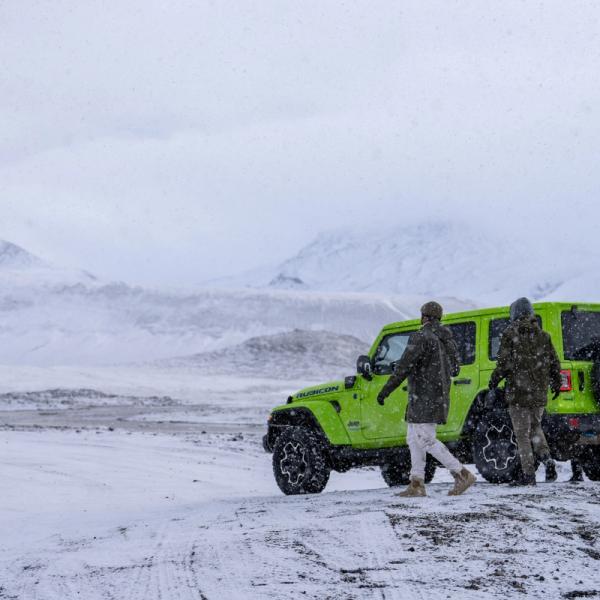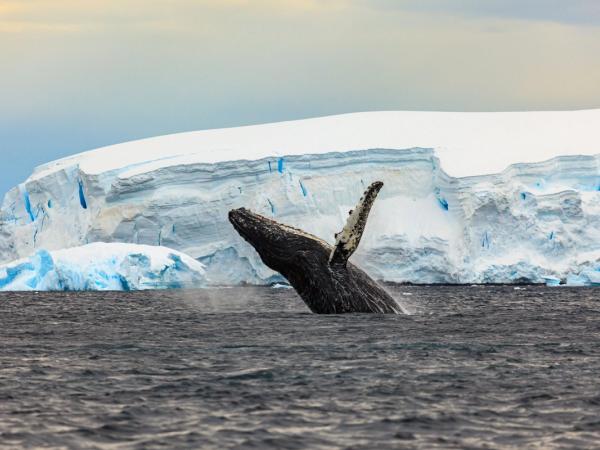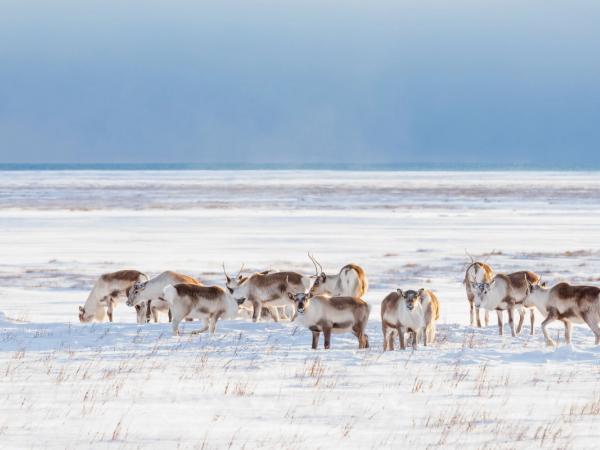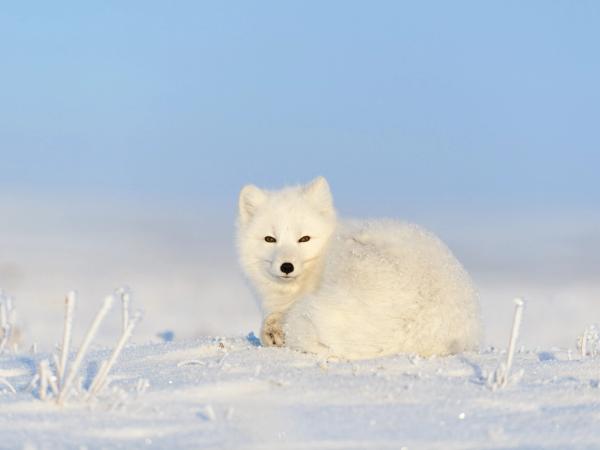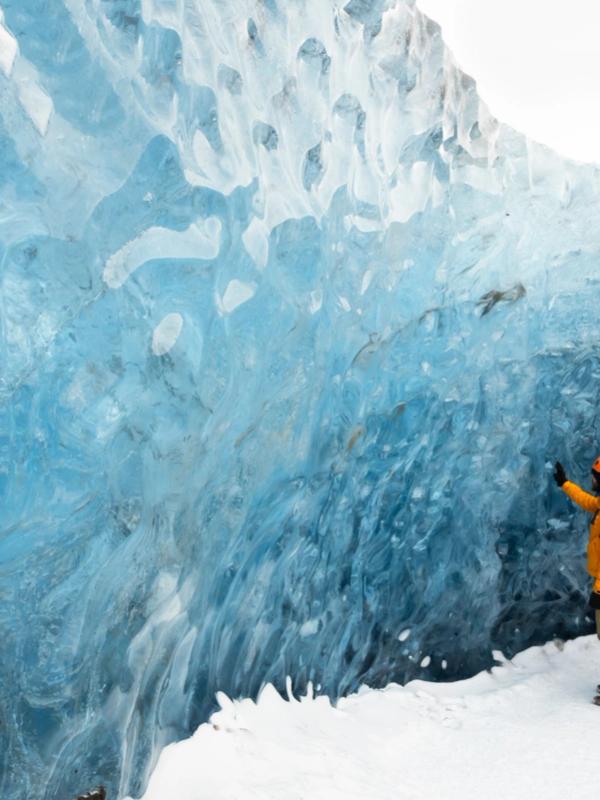
Iceland in February: Essential Tips for a Winter Wonderland Adventure
Picture this: A land blanketed in snow, under a sky ablaze with dancing lights. A world where geysers spurt from the frozen ground and where hot springs beckon you into their comforting warmth. This is Iceland in February, a real-life winter wonderland waiting for you to embark on an unforgettable adventure.
Key Takeaways
- Iceland in February offers more daylight for activities and an increased chance to see the Northern Lights, with brisk weather making for a picturesque winter setting.
- Travelers to Iceland in February should prepare for challenging winter road conditions by renting suitable vehicles, checking forecasts, and carrying emergency supplies for a safe journey.
- Visiting geothermal pools, participating in unique Icelandic festivities, and exploring natural wonders like ice caves and glaciers can create an unforgettable winter experience in Iceland in February.
Navigating Iceland's Wintry Terrain: Safe Driving Tips
Conquering Iceland’s winter roads is an exciting challenge. You’ll need to be prepared to tackle icy roads and strong winds. For confidence on the road, consider renting a four-wheel-drive vehicle.
All rental cars from Go Car Rental come equipped with studded winter tires during February, ensuring a safer journey.

Always check road and weather conditions before setting out, especially if you’re planning to drive routes like the Golden Circle. We recommend using road.is for up-to-date road conditions and vedur.is for the latest weather updates.
It’s equally important to be ready for emergencies by carrying adequate supplies like:
- drinking water
- food
- blankets
- a fully charged mobile phone
Safe driving is key to an enjoyable winter adventure in Iceland.
Embracing the Icelandic Chill: What to Expect Weather-Wise
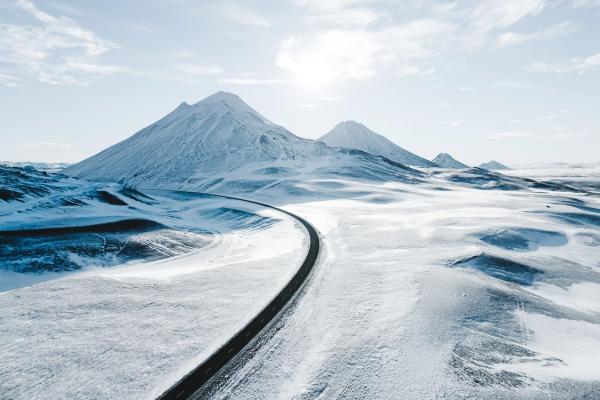
Adventurers will find the Icelandic weather in February a thrilling mix of:
- cold
- snow
- wind
- rain
Creating an exciting and unpredictable experience. With an average temperature hovering around 37 degrees Fahrenheit and an invigorating average rainfall of about 3.3 inches, Iceland transforms into a true Snowy Paradise. Rather than being deterred by the chill, embrace it as part of the adventure!
As the month progresses, Iceland gains about 6 minutes of sunlight each day, extending your daylight hours for fun-filled activities. The extended periods of darkness coupled with clear nights significantly increase your chances of witnessing the magical Northern Lights. So, brace yourself for a mesmerizing display of color in the night sky, a sight you’ll remember for a lifetime.
Chasing the Aurora Borealis: Best Northern Lights Tours

Chasing the Northern Lights in Iceland is perfect in February. Two amazing options await you - driving out on your own with a rental car or opting for a guided tour. Each has its perks, with self-hunting giving you the freedom to explore, and tours providing expert guidance on prime locations and optimal viewing times.
To maximize your chances of seeing the Northern Lights, here are some tips:
- Plan to hunt them over several nights
- Look for clear, cold nights with minimal light pollution
- Check the aurora forecast to time your search with high solar activity
- If the Northern Lights don’t show up on your first northern lights tour, most tour companies offer the opportunity to join another tour at no extra cost.
Be prepared with the right equipment and camera settings to capture the aurora borealis in all its splendor.
| January | Virtually certain |
| February | Virtually certain |
| March | Very Likely |
| April | Likely |
| May | Not Possible |
| June | Not Possible |
| July | Not Possible |
| August | Unlikely |
| September | Likely |
| October | Very Likely |
| November | Virtually certain |
| December | Virtually certain |
Immersing in Geothermal Bliss: Hot Springs and Pools
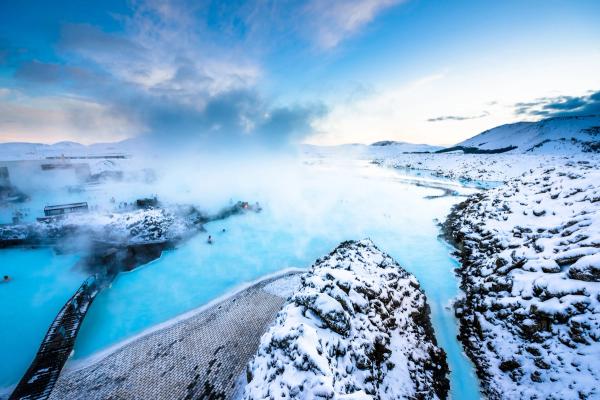
The cold weather in Iceland in February can be escaped by enjoying Iceland’s geothermal natural hot springs, pools, and hot tub experiences, including the popular hot tubs. Imagine relaxing in warm waters with a view of the stunning natural landscape around you - it’s an experience not to be missed. Among the top choices are:
- The renowned Blue Lagoon
- The natural Secret Lagoon
- The Sky Lagoon
- The Myvatn Nature Baths
The geothermal experience in Iceland extends beyond the famous lagoons. A wealth of geothermal attractions, from public pools in every town to seven unique complexes in Reykjavik, are waiting to be explored.
While larger lagoons like the Blue Lagoon have an entry fee, the unique bathing experience and well-maintained facilities make it a worthy investment for a memorable activity.
Exploring Frozen Natural Wonders: Ice Caving and Glacier Hiking

Iceland’s winter landscape offers unique opportunities for outdoor adventures, making it an ideal time to visit Iceland. Creating unforgettable memories is possible through countless ways, from the thrill of ice caving to the exhilaration of glacier walking.
Delving into a Ice Cave
Exploring the ice caves in Vatnajokull Glacier, extraordinary natural crystalline formations, is one of the most remarkable experiences. February is an ideal month for booking an ice cave tour due to slightly lower average precipitation levels compared to other winter months.
Joining a guided group can unlock the ice caves, ensure your safety, and give you an unforgettable experience.
Conquering Glacial Peaks

The thrill of hiking a glacier, especially on the Solheimajokull and Svinafellsjokull glaciers, is unbeatable. Witnessing the stunning electric blue color of the ice is an added bonus, enhancing the beauty of the hiking experience. Be prepared for the potential slipperiness caused by ice and ensure your safety by equipping yourself with necessary gear such as crampons and helmets provided by tour operators.
Cultural Glow in the Dark: Winter Lights Festival and Museum Night
The truly magical Winter Lights Festival in Reykjavik celebrates the lengthening of the days and the stunning beauty of Iceland’s wintery world. Illuminated buildings, cultural events, and various activities throughout the city create a festive atmosphere that’s sure to lift your spirits.
A thrilling aspect of the Winter Lights Festival is Museum Night, during which museums across the city entertain visitors by opening their doors. Also, don’t miss Pool Night, offering unique entertainment at public pools. These cultural experiences are a fantastic way to embrace local traditions while basking in the glow of winter lights.
Daylight Dynamics: Making the Most of Your Hours
The gift of increasing daylight hours, extending from an average of 7 hours at the beginning of the month to approximately 10 hours per day by the end, is brought by February in Iceland. Witness the magical sunrise around 10:00 am and the mesmerizing sunset at approximately 17:00 during February in Iceland.
| Sunrise | Sunset | Daylight | |
| January 1st | 11:19 | 15:42 | 4 hr & 23 min |
| February 1st | 10:09 | 17:13 | 7 hr & 4 min |
| March 1st | 08:33 | 18:47 | 10 hr & 14 min |
| April 1st | 06:44 | 20:20 | 13 hr & 36 min |
| May 1st | 04:58 | 21:53 | 16 hr & 55 min |
| June 1st | 03:21 | 23:31 | 20 hr & 10 min |
| June 21st (summer solstice) | 01:29 | 00:03 | 22 hr & 34 min |
| July 1st | 03:06 | 23:55 | 20 hr & 49 min |
| August 1st | 04:35 | 22:29 | 17 hr & 54 min |
| September 1st | 06:11 | 20:41 | 14 hr & 30 min |
| October 1st | 07:37 | 18:55 | 11 hr & 18 min |
| November 1st | 09:12 | 17:09 | 7 hr & 57 min |
| December 1st | 10:47 | 15:46 | 4 hr & 59 min |
With each day gaining roughly six and a half minutes of light, plan your outdoor activities and explorations to make the most of the natural daylight. Some activities to consider in Iceland’s increasing daylight hours in February include:
- Chasing the Northern Lights
- Exploring glacier caves
- Hiking in national parks
- Visiting waterfalls
- Taking a dip in hot springs
These longer daylight hours offer more opportunities to delve into the country’s natural beauty, while still appreciating the dark skies when the sun sets.
The Golden Circle in Winter: A Frosty Tour
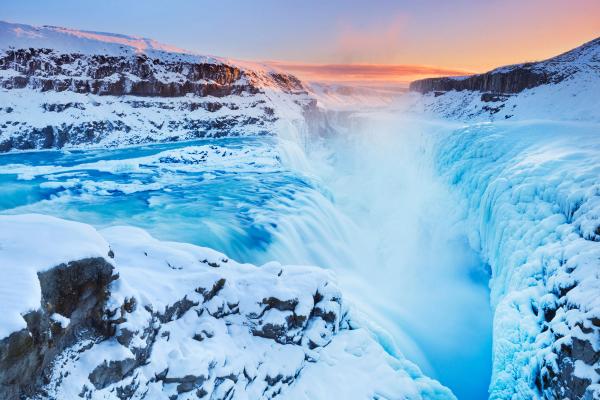
Consisting of three amazing sites: Thingvellir National Park, Geysir Geothermal Area, and the Gullfoss Waterfall, the Golden Circle is an absolute must-see in Iceland. February adds a magical touch to these iconic sites as they take on a frosty appearance, enhancing their natural beauty.
Thingvellir National Park is especially significant due to its rich nature, geography, geology, culture, history, and heritage. The Gullfoss waterfall, beautifully adorned with frost, and the spectacular eruptions at the Geysir Geothermal Area make the Golden Circle a frosty tour that’s not to be missed.
Warm Hearts in Cold Weather: Local Festivities and Traditions
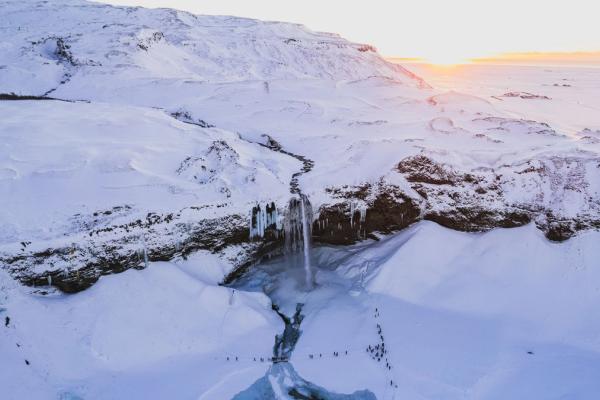
A series of local festivities such as Bolludagur or ‘bun day’, Sprengidagur or ‘Eat-Until-You-Burst-Day’, and Öskudagur, a holiday celebrated 40 days before Easter, mark Icelanders’ embrace of February. These traditions bring warmth and joy to the cold winter days, offering a unique insight into Icelandic culture.
One tradition that stands out is Woman’s Day, a tribute to the woman of the house. Taking place in the second half of February, it involves showering special women with fancy meals, flowers, and chocolates, while children also join in the celebration by giving their mothers flowers or presents.
Experiencing these local traditions is a heartwarming way to connect with Icelandic culture.
Venturing Beyond Reykjavik: South Coast and Snaefellsnes Peninsula
The diverse landscapes and natural attractions of the South and Snaefellsnes Peninsula beckon beyond the capital city of Reykjavik. Some of the highlights include:
- Skaftafell Nature Reserve
- Jokulsarlon Glacier Lagoon
- Seljalandsfoss and Skogafoss waterfalls
- Reynisfjara Beach
These natural marvels are perfect for February visits.
The Snaefellsnes Peninsula, on the other hand, offers breathtaking landscapes of snow-covered mountains, partially frozen water bodies, and enchanting historic villages. Whether you prefer the vibrant waterfalls of the South or the serene beauty of the Snaefellsnes Peninsula, venturing beyond Reykjavik promises an unforgettable adventure.
Wildlife Encounters: Whale Watching and Icelandic Horses
Another captivating aspect of visiting Iceland in February is its wildlife. One of the most memorable experiences is a whale-watching tour, where you have a chance to spot:
- white-beaked dolphins
- harbor porpoises
- orcas
- pilot whales
- beaked whales
- minke whales
Don’t forget to embrace the sea winds with warm clothes as you embark on this incredible adventure.
Alongside the whales, you’ll be charmed by the sight of Icelandic horses in their full winter fur. These unique horses, which have thrived in Iceland for over 1000 years, grow their fur to the max in winter, turning into adorable furballs. It’s a sight that adds a touch of warmth to the icy landscapes.
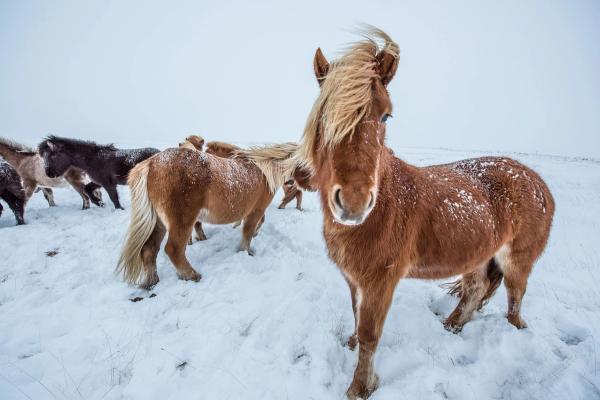
Preparing Your Suitcase: Packing Essentials for February
Careful thought is required when packing for Iceland in February to ensure you’re prepared for the unpredictable weather conditions. Warm clothes are essential for braving the Icelandic winter. Gear up with:
- Thermal underwear
- A parka or wind/rainproof jacket
- Outdoor pants
- A beanie
- Hiking boots
- Socks
- Gloves
- A warm sweater
For thrilling activities like glacier hiking and caving, make sure you have the following gear:
- Proper walking boots
- A base layer made of merino wool
- Hiking pants
- A warm sweater for a second layer
- A waterproof jacket to keep you dry and comfortable
Quality brands like REI offer top-quality waterproof winter jackets, waterproof trousers, and hiking pants that are worth considering for your gear. With the right gear, you’ll be all set for your winter adventure in Iceland.
Summary
From the stunning Northern Lights to the majestic glaciers, from relaxing in geothermal hot springs to celebrating local traditions, Iceland in February offers a unique blend of enchanting natural beauty and rich cultural heritage. Whether you’re an adventurous explorer or a tranquil nature lover, Iceland promises a frosty haven adventure that you’ll cherish forever.

